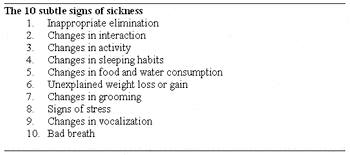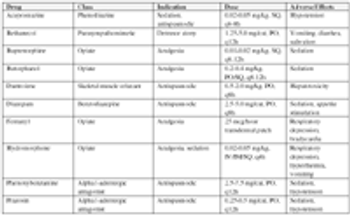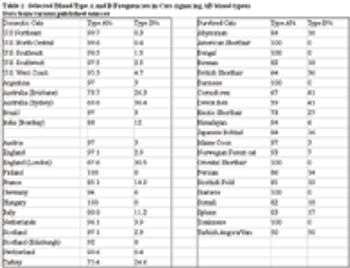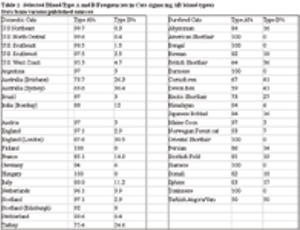
Dr. Susan Little addresses this critical component of patient care, including the importance of nutrition in ill cats, whether to force-feed anorectic cats, and when to place a feeding tube.
Dr. Little is the co-owner of Bytown Cat Hospital and Merivale Cat Hospital in Ottawa, Ontario, Canada. She is president of the American Association of Feline Practitioners.

Dr. Susan Little addresses this critical component of patient care, including the importance of nutrition in ill cats, whether to force-feed anorectic cats, and when to place a feeding tube.

Dr. Susan Little has compelling updates regarding feline infectious disease.

Particularly in aging cats, weight loss can be the earliest sign of disease, says Susan Little, DVM, DABVP.

Dr. Susan Little, discusses the importance of individualizing cats' nutritional management.

Don't attribute clinical signs in aging cats and dogs to old age alone, says Susan Little, DVM, DABVP.

Practical tips for use at home.

Dr. Susan Little advocates creating a photo history of your patients to track their weight.

The human genome is composed of about 3 billion base pairs, of which only about 2% forms coding DNA (genes); the rest is non-coding and serves various functions, such as gene regulation. Humans have about 20-25,000 genes, although the function of 50% of them is unknown.

There is no question that feline medicine has grown steadily in popularity since the 1970s when the first feline-only practices were established.

It is helpful to divide cats with FLUTD into obstructive and non-obstructive uropathy for treatment purposes. Obstructive uropathy is most commonly seen in male cats due to the small diameter of the male urethra. Typical clinical signs include dysuria, hematuria, frequent attempts to urinate, and licking at the penis or prepuce.

Dr. Susan Little discusses pain management for cats that undergo onychectomy.

Is it herpesvirus? Is it a bacterial infection? Drs. Little and VanVranken discuss how to handle these cases.

Drs. Susan Little and Pete Van Vranken discuss options for managing cats with this inconvenient disorder.

Drs. Susan Little and Pete Van Vranken discuss pancreatitis and triad disease in cats.

Dr. Susan Little addresses this critical component of patient care.

There are three well-known, clinically important blood groups in cats: A, B, and AB.1-2 Despite the nomenclature, the antigens in the feline AB blood group are not serologically related to the human ABO blood group antigens.

It has been estimated that at 25 to 33% of cats are either overweight or grossly obese, with the highest rates seen in middle-aged cats. Yet the 2003 AAHA Compliance Study (The Path to High-Quality Care) found that veterinarians are significantly under diagnosing feline obesity. Owners also may not recognize when their cat is overweight, nor be aware of the associated health risks. Obesity should be the easiest disorder to diagnose, but it is also one of the hardest to treat.

The normal feline lower urinary tract has a number of defence mechanisms against infection. These include normal micturition (e.g., frequent and complete voiding), normal anatomy (e.g., length of urethra), uroepithelial mucosal barriers, the antimicrobial properties of normal urine (e.g., high specific gravity and osmolality) and a normal immune system.

Lower respiratory tract disease produces typical clinical signs in cats, including chronic cough and wheeze as well as dyspnea that may have a sudden onset.1 Owners may report an increase in respiratory rate (>30-40 breaths per minute), increased expiratory effort and lethargy. Clinical signs may be mild to severe and may be chronic or intermittent.

Lower urinary tract disease in cats was described as early as 1925. Over the years, the terms "feline urologic syndrome" (FUS) and "feline lower urinary tract disease" (FLUTD) have been used to describe the group of clinical signs related to problems voiding. However, these descriptive terms do not identify the underlying etiology.

The cat is considered a resistant, yet susceptible host for Dirofilaria immitis. Worm burdens are much lower in cats than in dogs (average 15 worms in dogs and 1-3 in cats in endemic areas) and about 1/3 of feline infections involve worms of the same sex. Feline heartworm (HW) was first described in the 1920s; awareness has increased greatly since the introduction of Heartgard for cats in 1997 and the associated marketing campaign. Feline HW remains a difficult to diagnose, yet fully preventable disease.

Cats are masters at hiding illness, so that clinicians must become expert at uncovering illness with a thorough medical history and feline-specific physical examination. Obtaining a medical history is easier than ever in today's electronic world. Clinicians can take advantage of multimedia tools to collect information, ranging from an email containing a basic signalment to videos of a particular behavior.

Struvite and calcium oxalate (CaOx) uroliths are the most commonly reported uroliths in cats. In the last 25 years, dramatic change in the prevalence of different urolith types has occurred. Until the mid-1980s, struvite uroliths made up 78% of submissions to the Minnesota Urolith Center (MUC).

The human genome is composed of about 3 billion base pairs, of which only about 2% forms coding DNA (genes); the rest is non-coding and serves various functions, such as gene regulation. Humans have about 20-25,000 genes, although the function of 50% of them is unknown.

Feline idiopathic cystitis (FIC) is a sterile, inflammatory process causing signs of lower urinary tract disease (LUTD). It affects 1.5% of cats presented to primary care veterinarians.21 It is the most common diagnosis for young cats with LUTD (the second most common being urolithiasis).

In a recent survey of the health status of over 31,000 dogs and over 15,000 cats examined at veterinary practices in the United States, the most commonly reported disorders were dental calculus (20.5% prevalence in dogs; 24.2% in cats) and gingivitis (19.5% prevalence in dogs; 13.1% in cats).

The human genome is composed of about 3 billion base pairs, of which only about 2% forms coding DNA (genes); the rest is non-coding and serves various functions, such as gene regulation.

Kittens make up a significant proportion of the patient population in both general small animal and feline specialty practices.

Acute and chronic upper respiratory tract disease caused by feline herpesvirus (FHV) and feline calicivirus (FCV) is well known to practitioners.

Long term administration of oral medications can be problematic in cats.

Published: July 17th 2012 | Updated:

Published: January 5th 2011 | Updated:

Published: May 1st 2012 | Updated:

Published: August 1st 2010 | Updated:

Published: August 1st 2010 | Updated:

Published: August 1st 2010 | Updated: